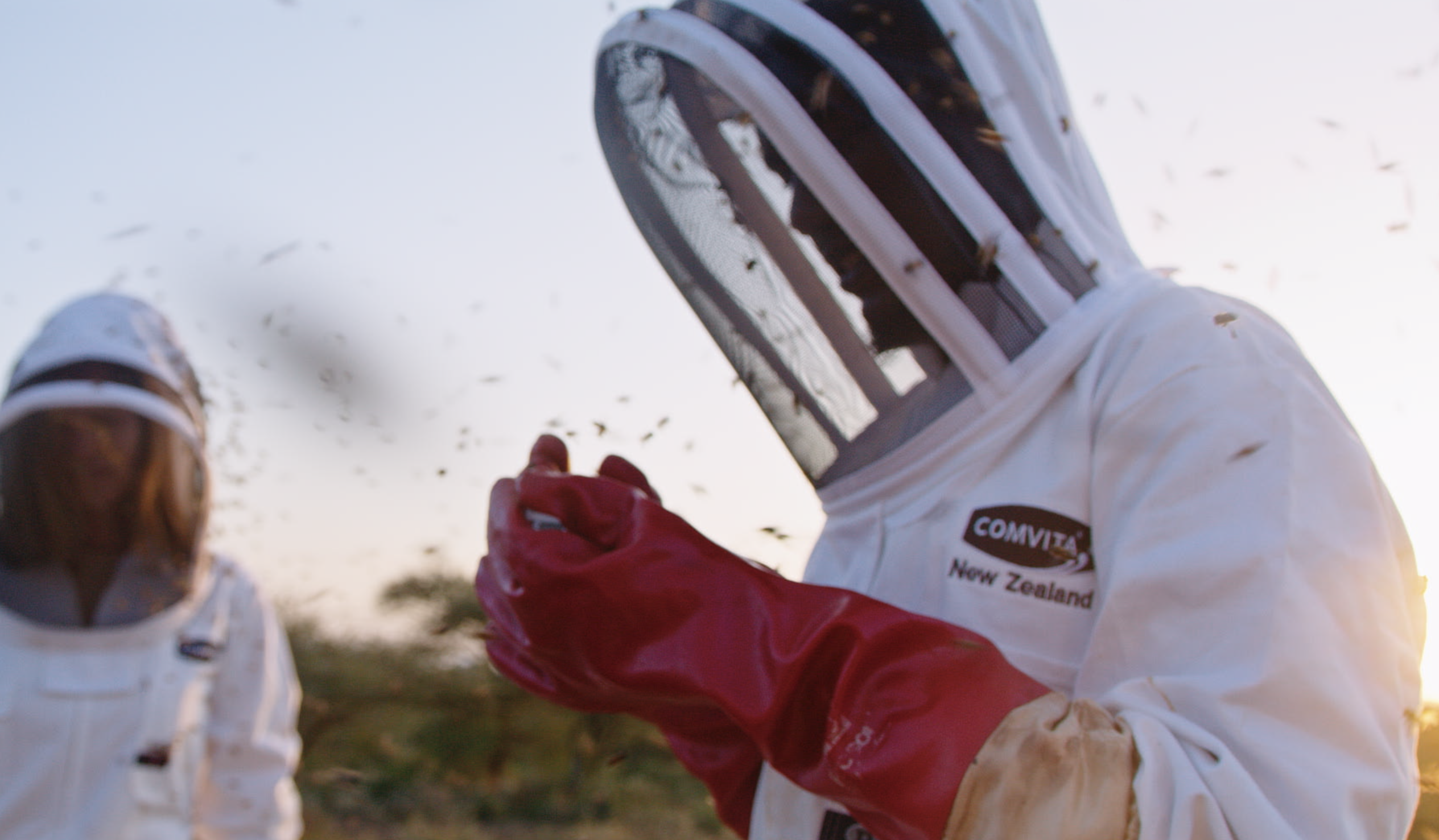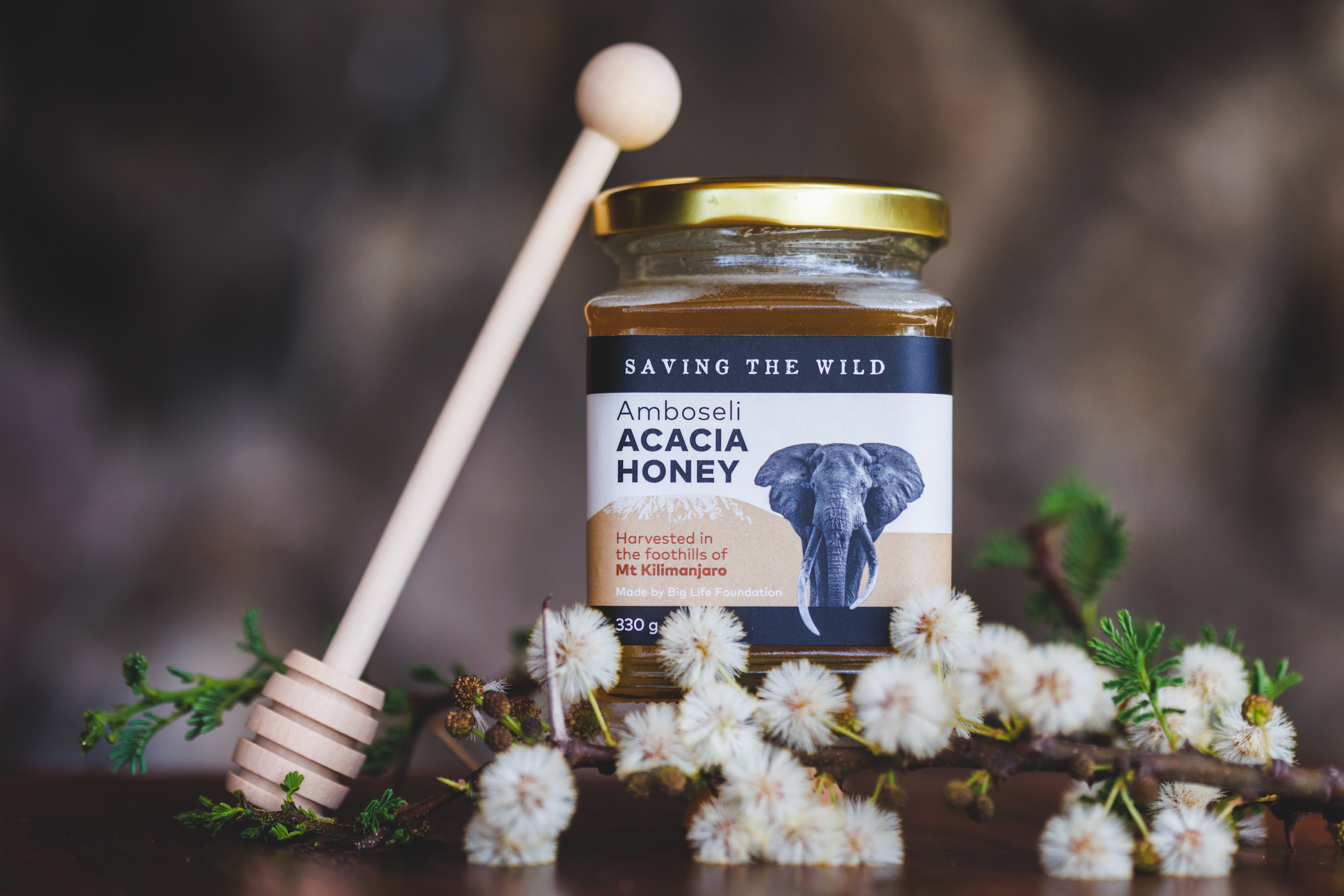
Order Confirmed
We’re sorry, the page you requested could not be found.
By Jamie Joseph, Saving the Wild Founder
It was around 7:30pm on the 27th of April when I received a message from a ranger in Kenya to tell me that Tolstoy had died. Suddenly I felt a clamp on my heart as tears streamed down my cheeks.
Tolstoy was one of the last great tuskers left on earth, with ivory that swept the ground. Throughout the lockdowns of the pandemic, and during the making of Kimana Tuskers, I had spent more time with Tolstoy than I had with most humans. He was a gentle giant, a living natural wonder, and whenever I was in his company, I felt myself in a state of reverence.
Together with Comvita and our Big Life partners on the ground, we had created the Saving the Wild Beekeeping Project to secure wild land - not just for Tolstoy, but for all wildlife, and for people too. This project is a reflection of Comvita’s founding principle of Kaitiakitanga - the guardianship and protection of nature. Throughout the project, Comvita’s head beekeeper, Carlos Zevallos, has been consulting with the beekeepers on the ground in Kimana, ensuring they had all the support they need from a man with decades of experience behind him.
In early 2021, the first 200 hives were placed throughout the Kimana Wildlife Corridor - a vital ‘highway for wildlife’ connecting Amboseli National Park with the Chyulu Hills and Tsavo-protected areas. The Maasai land owners were happy because they were incentivised not to sell their wild land to a farm development, which would ultimately create more conflict between humans and elephants. Revenue from honey sales would go into a scholarship education fund for their daughters, and with one educated person in the community able to support up to 20 dependents, it was an opportunity to flip the African proverb of ‘it takes a village to raise a child’.
Tolstoy died of a spear wound in his right front leg. He lived in a fast-disappearing landscape, and six weeks earlier he had been crop raiding in a farm development. It was rare for someone to throw a spear. Big Life Foundation have good relations with the local communities, and usually they would alert the rangers who would rush over and drive the elephants away from the temptation of juicy tomatoes or whatever else was on display in the land the elephants once called home. When Big Life Rangers hadn’t seen Tolstoy for a little while they went looking, and found him injured and resting under a tree. The vets were immediately called in and the wound was treated, but in the end, it wasn’t enough.
On the 27th of April, Big Life Rangers in Kimana Sanctuary found Tolstoy lying down. He was still alive when the vets arrived on the scene. For many hours the rangers and vets tried to pull him up with vehicles and ropes, but it just wasn’t enough. Tolstoy finally ran out of strength and died, surrounded by the rangers who had looked out for him for so long.
Tolstoy had survived half a century on this ravaged earth. He had survived two poaching wars, but ultimately, it was the rapidly expanding farmlands that killed him.
I am currently in South Africa working on a massive rhino-poaching syndicate bust. Later this month I’ll be packing my bags and heading back to Kenya, back to the Kimana Wildlife Corridor, my happy place. I am counting the sleeps now until I see Craig, the last of the Kimana Tuskers, and I will treat each day as if it is our last, because it might just be. But unlike Tolstoy who became wanderlust since his best friend Tim died of natural causes in 2020, Craig has a good chance of many more years because he tends to spend most of his time in the corridor, where we can protect him. But this is not without its challenges...
Our local beekeepers learn their art from Carlos Zevallos, Comvita’s head beekeeper.
Our first honey harvest was in February and it was a small harvest. We’d been hit hard by the drought, and one very determined honey badger. Late last year, the small but fierce badger was able to burrow under fencing through very rocky and hard ground and gain entry to one of the apiaries where he feasted. In total, that honey badger knocked 14 hives from their stands and consumed all the honey they contained.
Once the breach was discovered, heavy rocks were placed in the hole he had dug, and torches were set up overnight to deter his return. Ranger teams also assisted with patrols throughout the night to check on the apiary.
The beekeeping team then worked quickly to build a two-foot-deep cement and wire mesh re-enforced foundation around all the apiaries. As they worked on the first one, another honey badger attack happened at a second, and four additional hives were lost. Fortunately the team were able to respond quickly and recapture the colonies, which had moved to nearby trees. One can’t help but admire the tenacity of honey badgers, notorious for attacking enemies, even lions, far greater in size and strength.
As World Bee Day approaches on 20 May, the good news is that our delicious ‘Saving the Wild’ Acacia honey is currently being sold to eager tourism lodges in Kenya, and will be distributed throughout supermarkets and sold online. Craig, arguably the world’s most famous tusker, adorns the label representing all that is good when people come together to create an alternative livelihood model that is low impact and nature based.
Preserving Africa’s last great wild places is the true test of resilience. But make no mistake, spend one day in the foothills of Mt Kilimanjaro, and you will spend the rest of your life thanking the bees for securing wild land in the race to save the extraordinary.
"Dust to dust, water to water, ancient elephant roads have for centuries sustained the hunger to live. This is the passage of experience passed down from wise old bull to the younger bulls; a brotherhood."- from Kimana Tuskers, a documentary on the last of the great tuskers.

Our first batch of ‘Saving the Wil’d Acacia honey, featuring our last giant tusker, Craig.
Discover the difference of our Manuka Honey, learn the latest health and wellness tips, find recipes and more.

We’re sorry, the page you requested could not be found.